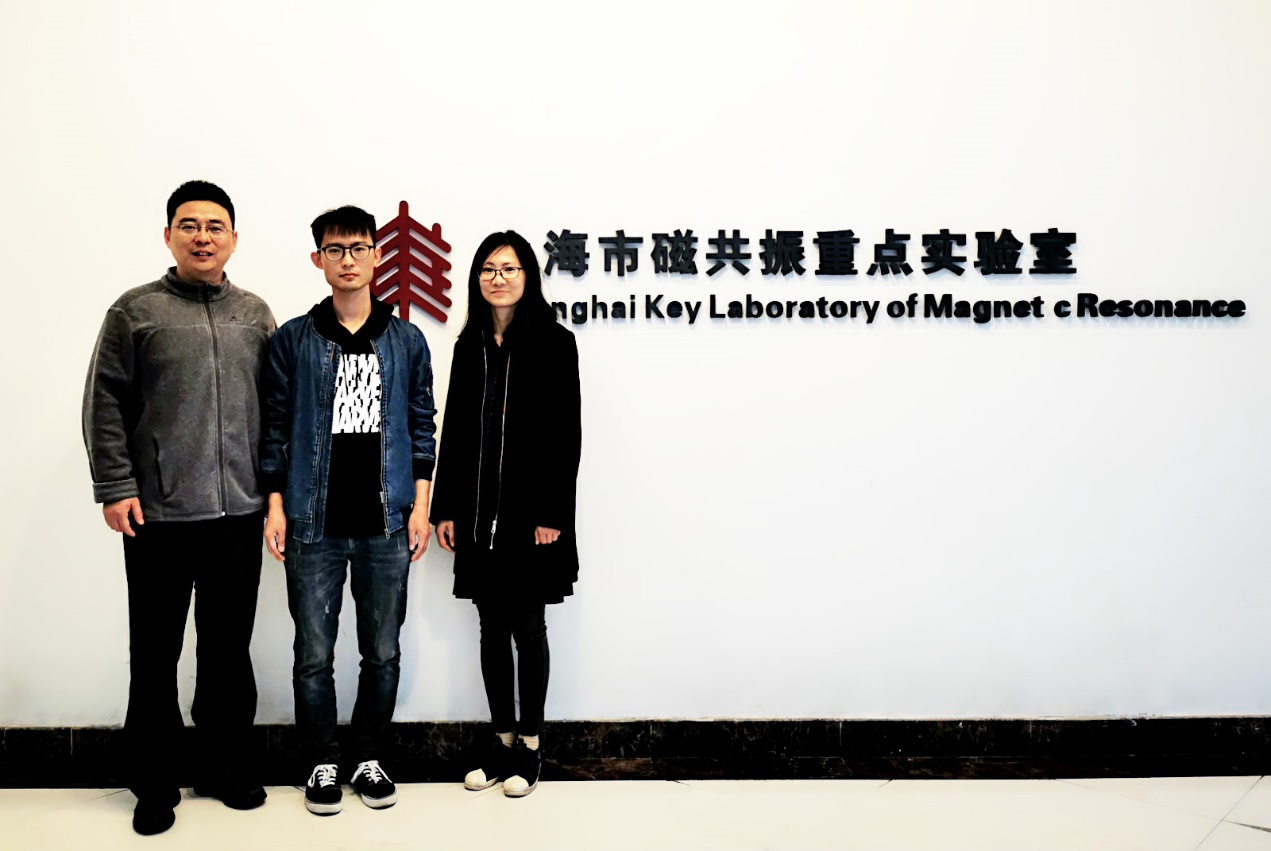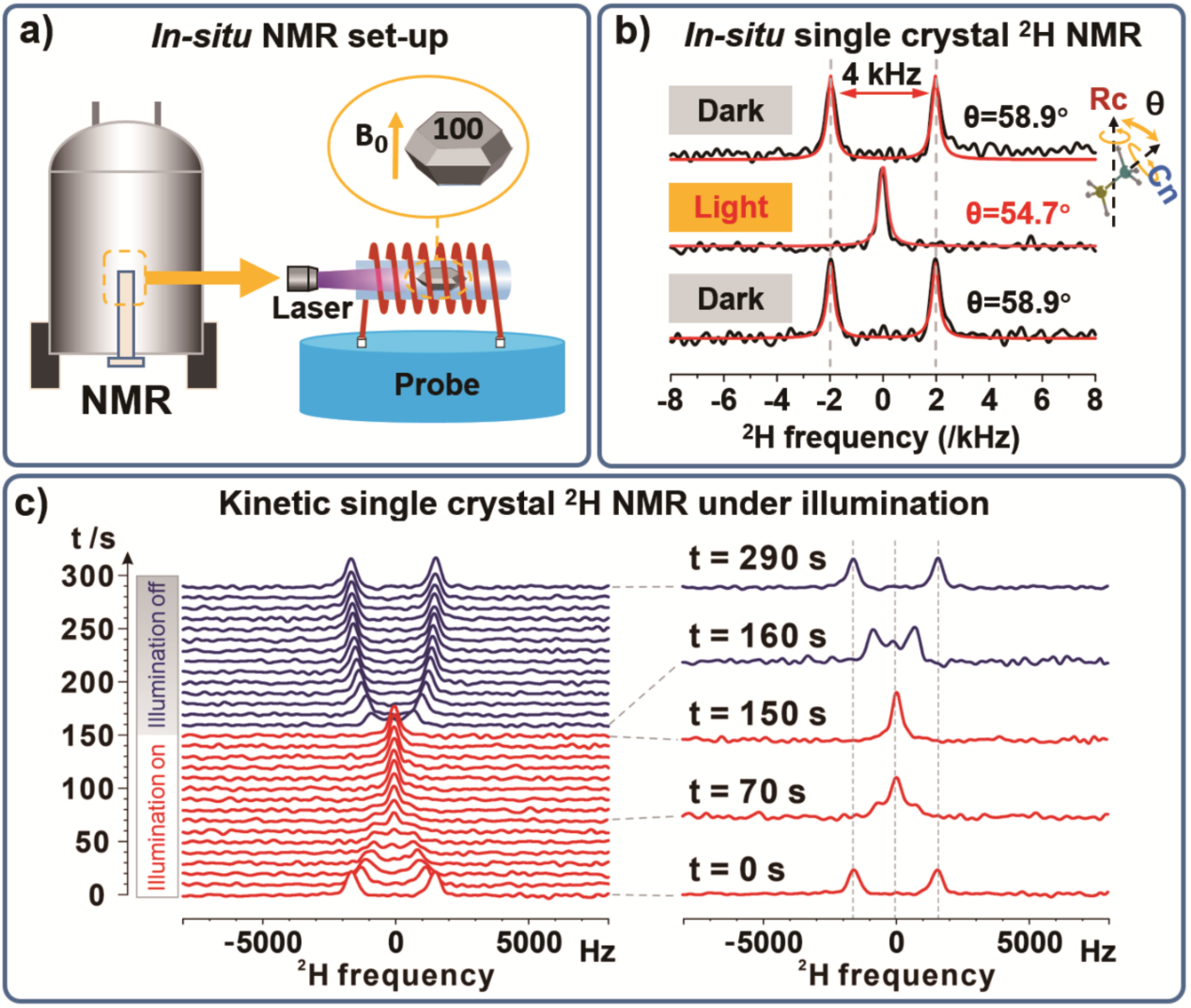
Recently, the team of Prof. Yefeng Yao and Prof. Xuelu Wang from the Shanghai Key Laboratory of Magnetic Resonance of the School of Physics and Electronic Science, ECNU, has made remarkable progress in the development of new in-situ nuclear magnetic resonance (NMR) instrumentation and the applications in the research of photoelectric material. Their work, titled as “In-situ NMR Investigation of the Photo-response of Perovskite Crystal”, was published online in Matter on October 1.

As a very important analytical technology, NMR plays a crucial role in chemistry, materials, biology, medicine and other research fields. However, due to the limitation of signal excitation and acquisition of NMR system, in-situ observation of transient structures and their transformation in the physical and chemical processes is very difficult for the traditional NMR system. This has strongly hinder our understanding of molecular mechanisms in photoelectric materials. Scientists thus have made a lot of efforts to design in-situ NMR instruments to study the photoelectric response of photoelectric material.

Fig. 1 In situ Single Crystal 2H NMR under Illumination
(A) Schematic illustrating the in situ NMR setup employed for the dynamic testing of single-crystal MAPbI3 (deuterated) at 293 K with the crystallographic a axis aligned along B0. (B) Single-crystal 2H NMR spectra (black lines) with and without laser illumination and the corresponding simulated 2H NMR spectra (red lines). (C) (Left) Dynamic single-crystal 2H NMR spectra acquired continuously with and without laser illumination over a 290-s period in 10-s intervals, and (right) a selection of characteristic 2H NMR spectra acquired at specific times. In the in situ NMR setup, a continuous 405-nm laser light was introduced into the NMR probe via an optical fiber with an incident power of 28 mW/cm2.
Aiming at the problem of in-situ NMR detection of the photoelectric response of photoelectric material, the team led by Prof. Yefeng Yao has developed a new device for the magnetic resonance signal detection (see Fig. 1). The device can introduce light of different wavelengths and powers into NMR probes, facilitating the in-situ NMR detection of photoelectric material under various light sources.
Recently, by suing on the developed in-situ NMR technology, Yao’s team has carried out a series of research work focusing on the transient physical and chemical processes due to the interactions between light and matter. These works include: i) The in-situ NMR study of the evolution of various chemical substances on the photocatalyst surface under the real solid-liquid reaction conditions (Journal of Physical Chemistry Letters 2020, 11, 9, 3738-3744;Journal of Catalysis 2019, 378, 36–41); ii) The in-situ NMR study of the influence of surface plasmon resonance (SPR) effect on the surface chemical reaction of the photocatalyst (Journal of Catalysis 2020, 382, 173-180); iii) Quantitative measurement of Cr(III) ion concentration in different spaces of the sample by using the in-situ low-field NMR (Environmental Science: Nano 2020, 7, 2823-2832). The above-mentioned research works demonstrate the great potential of the in situ NMR developed by Yao's team in the study of the photoelectric materials. Because of the important contribution on the in situ NMR, Yao’s team received a special invitation from the editor-in-chief of Journal of Physical Chemistry C to contribute a paper about the in situ NMR research to the journal.
The above research works were funded by the National Natural Science Foundation of China, Science and Technology Commission of Shanghai Municipality, and the Micro Magnetic Resonance Platform of East China Normal University.
The related links:
https://doi.org/10.1016/j.matt.2020.09.004
https://dx.doi.org/10.1021/acs.jpclett.0c00972
https://doi.org/10.1016/j.jcat.2019.08.016